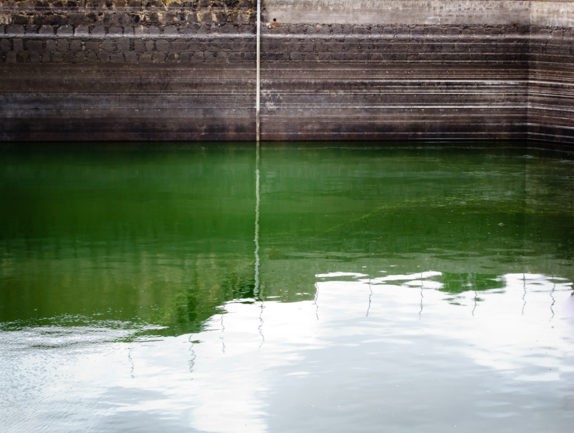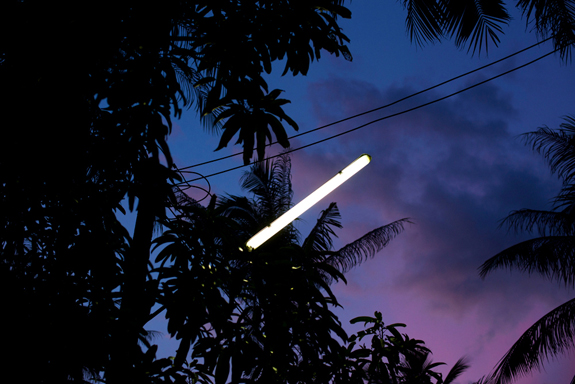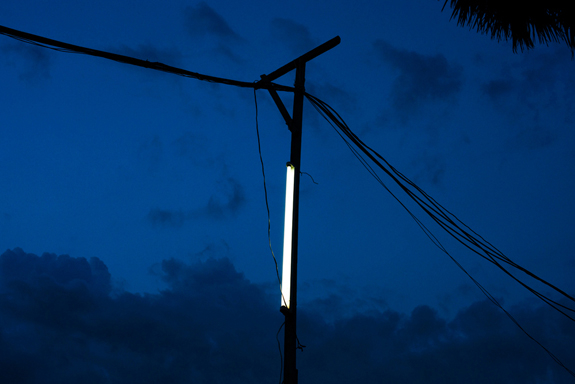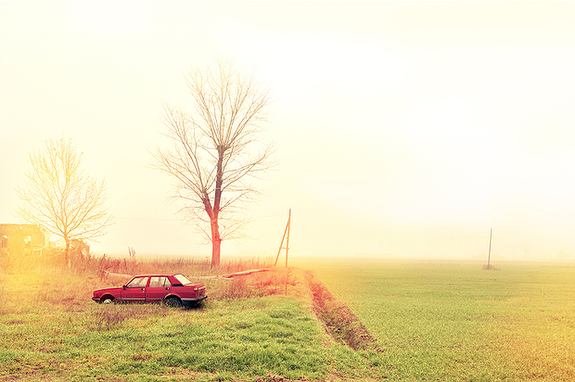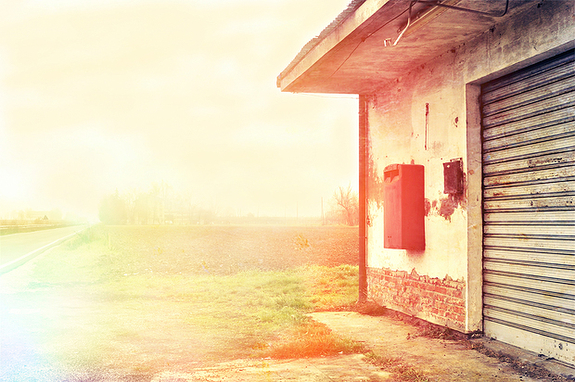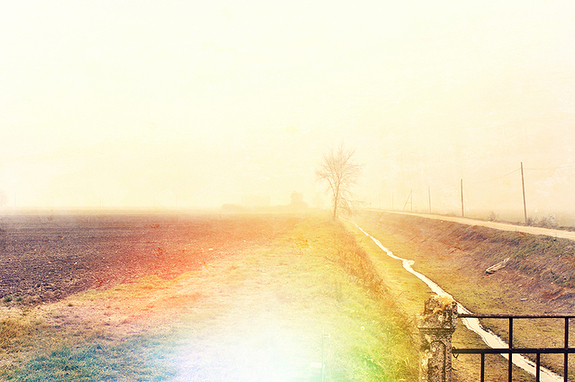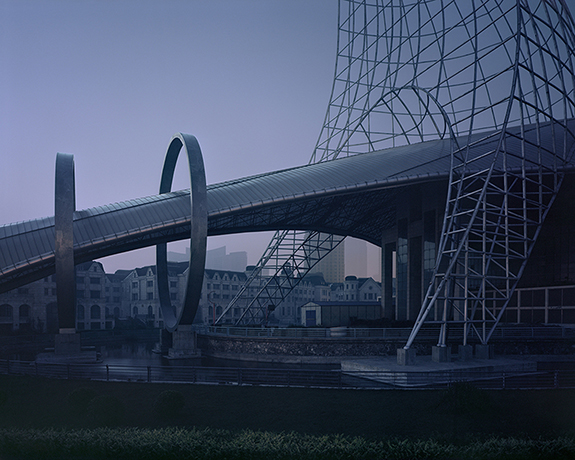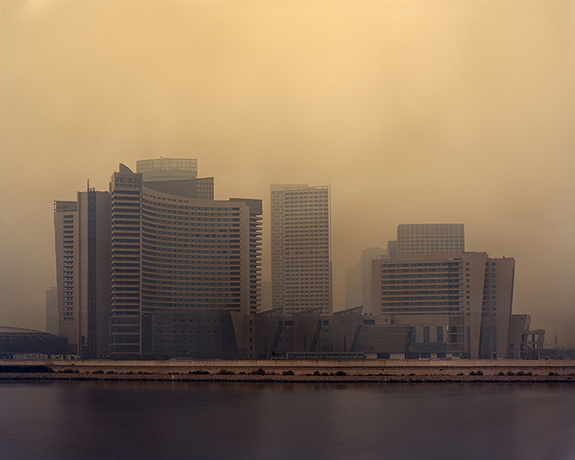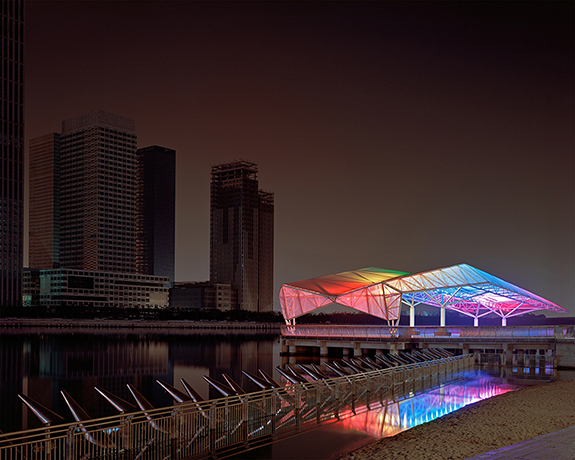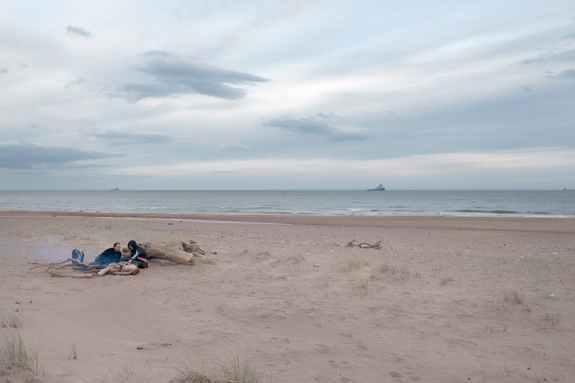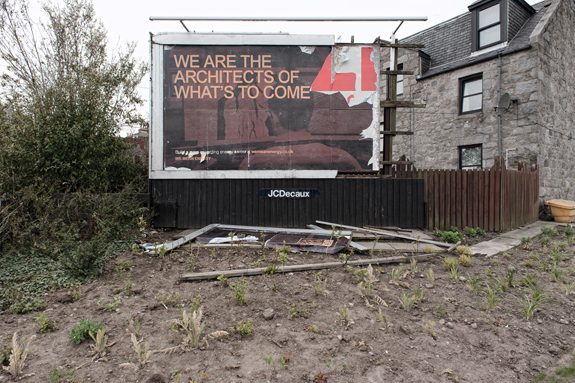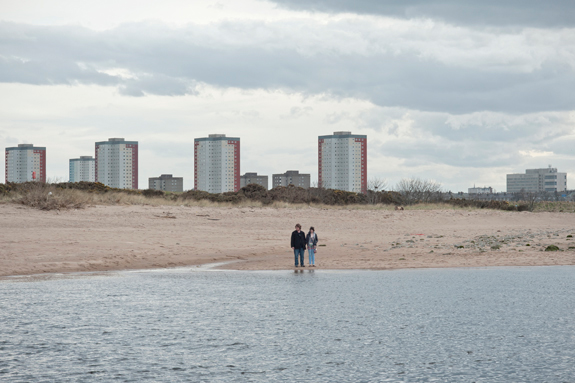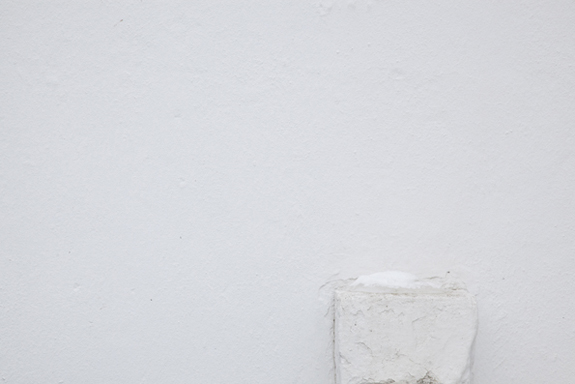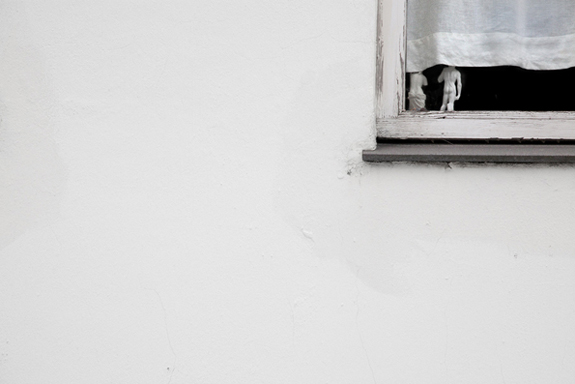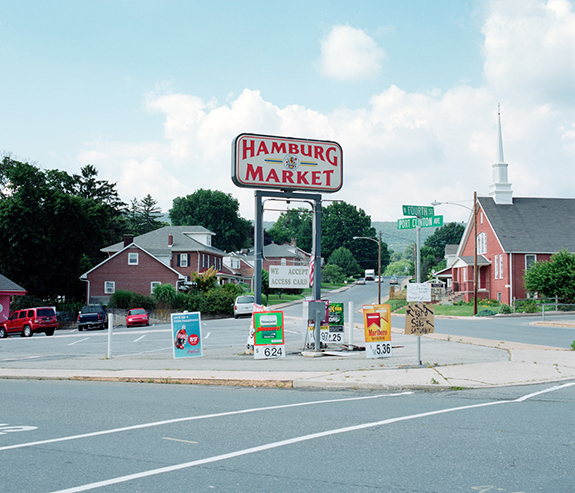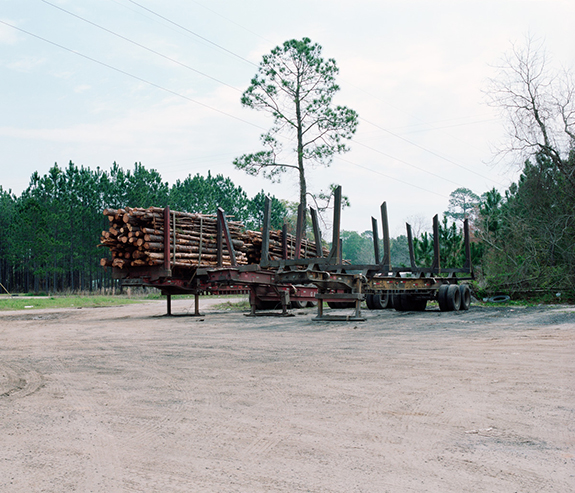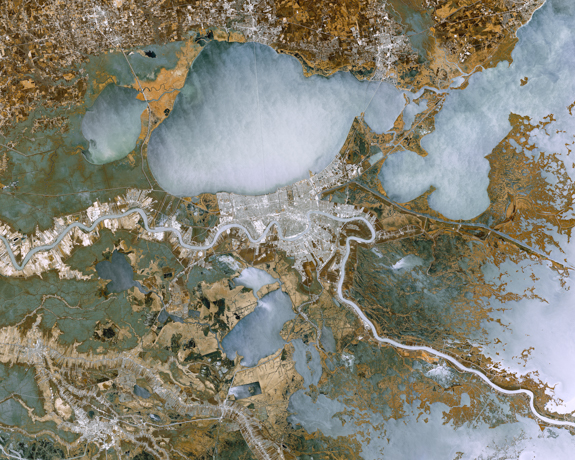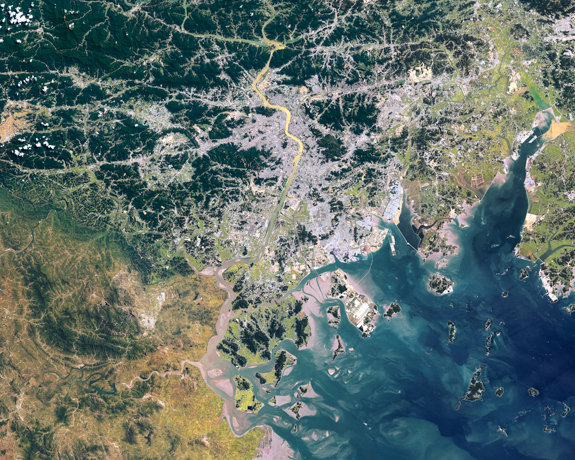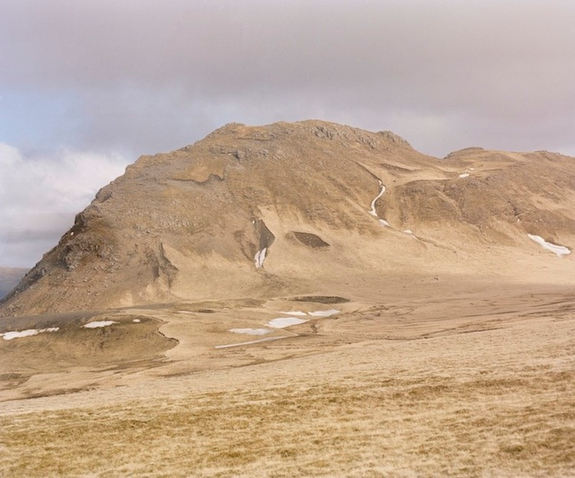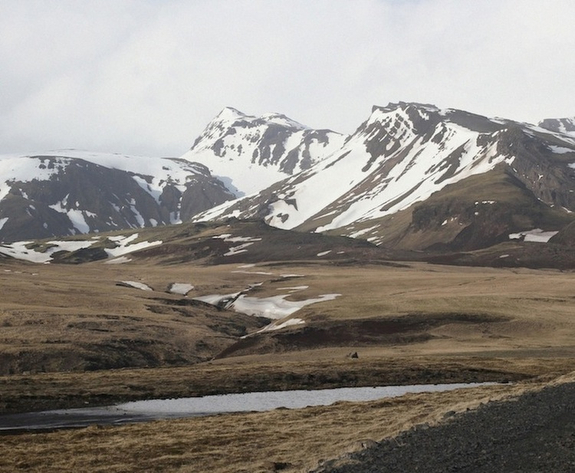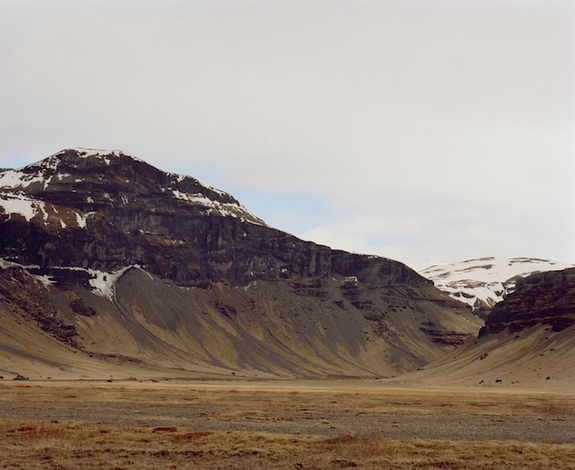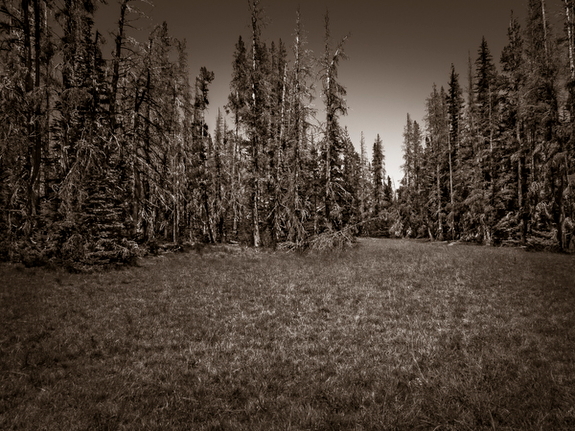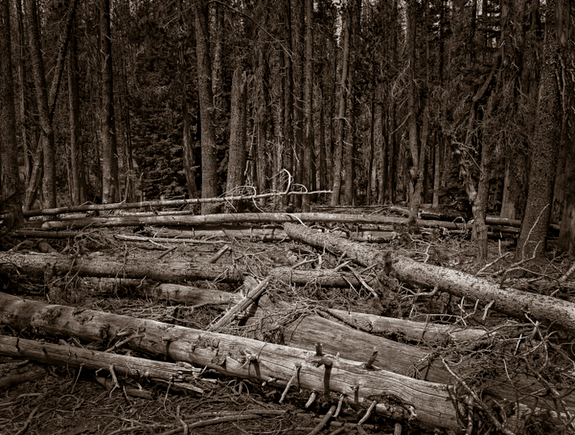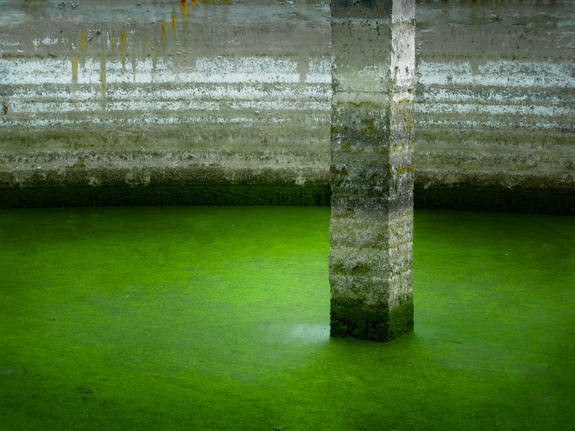
Between June 2006 and June 2012 I returned to live in Gran Canaria, in the Canary Islands, where I had spent my childhood. I found myself living in the Medianías, an area with ancient agricultural tradition and where part of my upbringing took place. Each farmland had at least one pond or reservoir to capture rainwater for irrigation. Most of them are now obsolete, abandoned and highly dilapidated by the passage of time, bacterial action and weather conditions.
From the outside they are just ugly, functionally built structures. But peer inside and you will find these hidden landscapes: locked up lakes, frozen fjords, jungles, fortresses, meadows, forests… breathtaking beauty concealed to all behind their rough outer shell. A contained territory within another territory.
To me they are imaginary lands, psychological landscapes, projections and reflections of my own state of mind.
— Marisa Culatto, Hertford, United Kingdom

